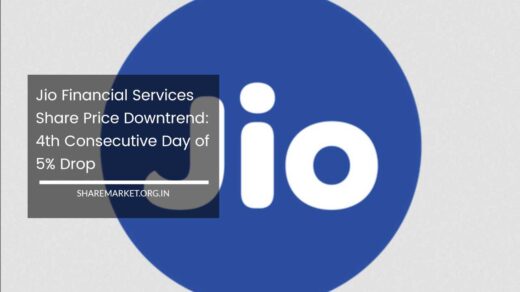What is IPO in Share Market

What is IPO in Share Market
What is an IPO in the Share Market? A Comprehensive Guide
An Initial Public Offering (IPO) is a momentous event in the financial landscape, often surrounded by considerable hype and anticipation. For many, an IPO represents the exciting opportunity to invest in a company at its earliest stages of public trading.
But what does it mean for a company to go public, and how does the IPO process work? This comprehensive guide will demystify the IPO process, explaining its various stages, benefits, risks, and the factors investors should consider.
Understanding IPOs
An IPO is the process by which a private company offers its shares to the public for the first time. Before an IPO, the company is privately held, with ownership usually concentrated among a small group of founders, early investors, and employees. By going public, a company aims to raise capital by selling a portion of its ownership to public investors.
Why Companies Go Public
The primary motivation behind an IPO is to raise capital. This influx of funds can be used for a variety of purposes, including:
- Expansion: Companies often need substantial funds to grow, whether it’s opening new locations, entering new markets, or developing new products.
- Debt Reduction: IPO proceeds can be used to pay down existing debt, improving the company’s balance sheet.
- Acquisitions: Public companies may use their stock as currency for acquiring other businesses, which can be a strategic move for growth.
- Research and Development: Funds from an IPO can support ongoing research and development efforts, fostering innovation and technological advancements.
- Employee Compensation: Going public can enable a company to offer stock options or shares as part of employee compensation packages, which can be an attractive benefit.
The IPO Process
The IPO process is intricate and involves multiple stages. Each step is crucial for ensuring a successful transition from a private to a public company.
1. Pre-IPO Stage
Idea Generation
The pre-IPO stage begins with the company conceptualizing its business model and developing its product or service. This is often a lengthy process involving market research, product development, and initial customer feedback.
Seed Funding
Initially, companies raise seed funding from founders, friends, and family. This early-stage capital is critical for getting the business off the ground and developing the first version of the product or service.
Early-Stage Funding
Once the company has a viable product and some traction, it seeks additional funding from venture capitalists and angel investors. These early investors provide capital in exchange for equity and often offer strategic advice and mentorship.
Late-Stage Funding
As the company grows and approaches the IPO stage, it may seek larger investments from private equity firms or strategic investors. These late-stage investors provide substantial capital to support expansion and prepare the company for public listing.
2. Selection of Underwriters
The company hires investment banks, known as underwriters, to guide it through the IPO process. The underwriters play a pivotal role in assessing the company’s financials, market potential, and valuation. They help determine the appropriate IPO price and facilitate the sale of shares to the public.
3. Pricing the IPO
One of the most critical steps in the IPO process is pricing the shares. The underwriters, in consultation with the company’s management, determine the initial public offering price (IPO price). This price must strike a balance between raising sufficient capital for the company and attracting investors.
4. Filing the Registration Statement
The company must file a registration statement with the relevant regulatory body, such as the Securities and Exchange Board of India (SEBI) or the U.S. Securities and Exchange Commission (SEC). This document, known as the S-1 filing in the U.S., includes detailed financial information, business plans, and other pertinent disclosures. The regulatory body reviews this document to ensure compliance with legal requirements.
5. Roadshow
Once the registration statement is filed, the company, along with its underwriters, embarks on a “roadshow.” During this period, the company presents its business model, financial performance, and growth prospects to potential investors. The roadshow serves to generate interest in the IPO and gauge investor appetite for the shares.
6. Pricing the IPO (Final Stage)
Based on feedback from the roadshow and investor demand, the final IPO price is determined. This price reflects the market’s valuation of the company and influences the initial trading activity.
7. Share Allocation
Shares are allocated to investors based on the final IPO price. Allocation typically includes a mix of institutional investors, such as mutual funds and pension funds, as well as retail investors. The allocation process can be competitive, as demand for shares often exceeds supply.
8. Listing
After the shares are allocated, they begin trading on a stock exchange, such as the Bombay Stock Exchange (BSE) or the National Stock Exchange (NSE) in India, or the New York Stock Exchange (NYSE) or NASDAQ in the U.S. The listing marks the company’s transition to being a publicly traded entity.
Benefits of an IPO
An IPO offers several significant benefits to a company, its shareholders, and its stakeholders.
1. Raising Capital
The most immediate benefit of an IPO is the ability to raise substantial capital. This capital can be used to fund various strategic initiatives, such as expanding operations, investing in new technology, or pursuing acquisitions.
2. Enhanced Visibility
Going public increases a company’s visibility and brand recognition. The media attention and analyst coverage that accompany an IPO can boost the company’s profile, attract new customers, and enhance its reputation in the market.
3. Liquidity
Publicly traded shares can be bought and sold on the open market, providing liquidity to shareholders. This liquidity makes it easier for investors to exit their positions and realize their investments.
4. Exit Opportunity
For early investors and employees holding stock options or shares, an IPO offers a significant exit opportunity. Early investors can sell their shares and realize their gains, while employees can benefit from the liquidity and potential appreciation of their stock options.
5. Currency for Acquisitions
Publicly traded stock can serve as a valuable currency for acquiring other businesses. Companies can use their shares to pay for acquisitions, potentially facilitating strategic growth and expansion.
Risks of an IPO
While an IPO offers numerous benefits, it also comes with inherent risks that companies and investors must consider.
1. Dilution of Ownership
One of the primary risks of an IPO is the dilution of ownership for existing shareholders. As new shares are issued to the public, the ownership stake of current shareholders is diluted. This dilution can impact control and influence within the company.
2. Increased Regulatory Burden
Public companies are subject to rigorous regulatory requirements and reporting obligations. They must comply with various regulations, including periodic financial disclosures, audits, and governance standards. This increased regulatory burden can be costly and time-consuming.
3. Market Volatility
The stock market can be highly volatile, and share prices can fluctuate significantly based on market conditions, economic factors, and company performance. This volatility can impact the company’s valuation and investor sentiment.
4. Focus on Short-Term Performance
Public companies often face pressure to meet quarterly earnings targets and deliver short-term results. This focus on short-term performance can detract from long-term strategic planning and innovation.
Investing in IPOs
Investing in IPOs can be both rewarding and risky. Potential investors should carefully evaluate several key factors before committing to an IPO investment.
1. Company Fundamentals
Before investing in an IPO, it’s essential to analyze the company’s fundamentals. This includes examining the company’s business model, financial performance, management team, and industry prospects. Understanding the company’s growth potential and competitive position is crucial for making an informed investment decision.
2. Valuation
Evaluate the IPO price relative to the company’s earnings, growth potential, and industry peers. The valuation should be reasonable and reflect the company’s true worth. Investors should be cautious of overvalued IPOs, as they may experience significant price corrections.
3. Market Conditions
Consider the overall market sentiment and investor appetite for IPOs. Favorable market conditions and high demand for IPOs can positively impact the performance of newly listed shares. Conversely, unfavorable market conditions can lead to weak performance and volatility.
4. Risk Tolerance
Assess your own risk tolerance and investment goals before investing in an IPO. IPOs can be highly speculative and may involve significant risks. Ensure that the investment aligns with your overall portfolio strategy and risk appetite.
5. Long-Term Potential
While the initial trading days of an IPO can be exciting, it’s essential to consider the company’s long-term potential. Evaluate whether the company has a sustainable business model and growth strategy that can deliver value over time.
IPO Allotment, Grey Market, and IPO Grading: A Detailed Analysis
IPO Allotment
The IPO allotment process determines how shares are distributed to investors once an IPO issue has closed. This stage is crucial as it directly impacts who gets to invest in the new public company and in what proportion. The allotment can follow different mechanisms, depending on the country, the specific IPO, and the type of investors involved.
Allotment Mechanisms
- Lottery System: In many countries, including India, IPO allotment is often conducted through a lottery system. In this method, all applications are pooled together, and shares are allocated randomly among the applicants. This system is typically used for retail investors who apply for shares in smaller quantities. The lottery ensures that every applicant has an equal chance of getting allocated shares, though the actual allocation may depend on the demand and supply balance.
- Proportionate Basis: For institutional investors and sometimes for large retail investors, shares are allocated on a proportionate basis. Here, the number of shares each investor receives is proportional to their application relative to the total number of shares available. For example, if an institution applies for 1 million shares and the total demand is for 10 million shares, the institution may receive 10% of its applied amount. This method is often used to ensure that larger investors receive a fair share based on their investment size.
Allotment Status
Once the IPO subscription period ends, the allotment process begins. The status of the allotment is typically announced a few days after the issue closes. This status can be checked online on the respective stock exchange’s website or through the IPO registrar’s website. Investors receive an allotment letter or notification detailing the number of shares allocated to them. If an investor does not receive any shares, their application amount is refunded.
Grey Market
The grey market refers to an unofficial market where shares of an upcoming IPO are traded before they are officially listed on the stock exchange. This market operates outside of the regulated stock exchanges and is not sanctioned by regulatory authorities.
How the Grey Market Works
In the grey market, shares of a company are traded based on the expected price at which they will be listed. This trading occurs through informal channels, often involving brokers who specialize in grey market transactions. Investors buy and sell shares based on speculation about the IPO’s performance and the anticipated listing price.
Grey Market Premium (GMP)
The grey market premium (GMP) is a key indicator in the grey market. It represents the difference between the expected listing price of the shares and the IPO issue price. For instance, if an IPO issue price is ₹100 and the grey market is quoting a price of ₹120, the GMP would be ₹20.
- Significance: The GMP provides an early gauge of market sentiment towards the IPO. A high GMP indicates strong demand and positive expectations about the IPO’s performance once it lists. Conversely, a low or negative GMP can signal weaker demand or concerns about the company’s prospects.
- Risk: Trading in the grey market involves risk since it operates outside the purview of regulatory authorities. Prices can be highly volatile, and transactions are typically settled through informal means.
Legal Status
In India, the grey market is illegal and not regulated by any financial authorities. Despite this, grey market trading persists due to the lack of enforcement and the high interest in IPOs. Regulatory bodies such as the Securities and Exchange Board of India (SEBI) discourage participation in the grey market and emphasize that investors should rely on officially regulated exchanges for trading.
IPO Grading
IPO grading is a process by which IPOs are rated based on various criteria. This rating helps investors make informed decisions about which IPOs to consider for investment.
Purpose of IPO Grading
The primary purpose of IPO grading is to provide investors with an independent assessment of the IPO’s quality. Grading agencies evaluate various aspects of the IPO to determine its attractiveness and risk profile. The grade is meant to reflect the issuer’s financial health, management quality, business model, and growth potential.
Factors Considered in IPO Grading
- Company Financials: Grading agencies analyze the company’s financial statements, including its revenue, profitability, and balance sheet strength. They assess the company’s financial stability and growth prospects.
- Management Team: The experience and track record of the company’s management team are crucial. A strong and experienced management team is seen as a positive factor, contributing to higher grades.
- Industry Prospects: The sector in which the company operates is also evaluated. A company in a growing and promising industry may receive a higher grade than one in a declining or highly competitive sector.
- Valuation: The company’s valuation relative to its earnings, assets, and industry peers is scrutinized. A reasonable and attractive valuation can positively impact the IPO grade.
- Business Model: The viability and sustainability of the company’s business model are considered. A sound business model with clear competitive advantages is likely to receive a higher grade.
Impact of IPO Grading
- Investor Decision-Making: Investors use IPO grades as part of their decision-making process. A higher grade can signal a lower risk and greater potential for returns, making the IPO more attractive.
- Market Perception: IPO grades can influence market perception and investor confidence. A high grade can generate more interest and higher demand for the IPO, potentially leading to better listing performance.
- Regulatory Oversight: Grading agencies are typically independent and operate under regulatory oversight to ensure transparency and credibility. Their ratings are intended to provide an objective perspective on the IPO.
Limitations of IPO Grading
- Subjectivity: While grading agencies use structured methodologies, the process can involve subjective judgments about factors like management quality and industry prospects.
- Market Conditions: IPO grades do not account for short-term market conditions or sentiment, which can significantly impact the performance of an IPO.
- Past Performance: IPO grades are based on historical and projected data, which may not always accurately predict future performance.
The IPO allotment, grey market, and IPO grading are integral components of the IPO process. Understanding each of these aspects helps investors make informed decisions and navigate the complexities of investing in newly listed companies.
- IPO Allotment determines how shares are distributed to investors and can vary between lottery and proportionate systems.
- The Grey Market provides an unofficial avenue for trading shares before they are listed, with the grey market premium offering insights into expected performance.
- IPO Grading offers a structured evaluation of an IPO’s quality based on financials, management, and other factors, guiding investors in their investment choices.
Each of these elements plays a role in shaping the IPO experience, influencing both the company’s public debut and the investment opportunities available to potential shareholders. Understanding these facets can enhance investment strategies and improve outcomes in the dynamic world of IPOs.
Final Remarks
An Initial Public Offering (IPO) is a complex and pivotal event in the life of a company. It represents a transition from private to public ownership and offers both opportunities and challenges.
By understanding the IPO process, its benefits and risks, and the factors to consider when investing, individuals and companies can navigate the IPO landscape more effectively.
For companies, an IPO provides a valuable opportunity to raise capital, enhance visibility, and facilitate growth. For investors, it offers the chance to participate in the early stages of a company’s public journey, but it also requires careful consideration of various risks and factors.
Whether you are a company considering going public or an investor exploring IPO opportunities, having a comprehensive understanding of the IPO process and its implications is crucial for making informed decisions and achieving successful outcomes.

















